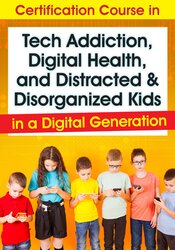Enhance Attention & Engagement with 6 Exercises to Combat Screen Fatigue
Movement Sequences to Energize & Restore

If you work with children, you’ve likely seen an increase in distracted and disorganized behaviors…especially when providing services via telehealth.
We all need different things throughout the day to increase energy to our brains. Research shows that kids’ developing brains need multisensory experiences with the world to build the foundations that enhance attachment and engagement…
…and that excessive screen time actually interferes with these processes. Screens stress the visual system, and information overload can put kids in a reactive rather than proactive mode.
Even if you only have a thirty-minute treatment session, there are simple exercises you can do that will improve a child’s availability and self-regulation. These six exercises from Aubrey Schmalle, OTR/L, SIPT help prime neurological pathways and strengthen connections in the brain…
So that kids can act intentionally and experience greater success.
In your next session, have your client follow along with these two movement sequences. Afterwards, ask them how each set of exercises made them feel – and what did they notice was different about each of them?
We all need different things throughout the day to increase energy to our brains. Research shows that kids’ developing brains need multisensory experiences with the world to build the foundations that enhance attachment and engagement…
…and that excessive screen time actually interferes with these processes. Screens stress the visual system, and information overload can put kids in a reactive rather than proactive mode.
Even if you only have a thirty-minute treatment session, there are simple exercises you can do that will improve a child’s availability and self-regulation. These six exercises from Aubrey Schmalle, OTR/L, SIPT help prime neurological pathways and strengthen connections in the brain…
So that kids can act intentionally and experience greater success.
In your next session, have your client follow along with these two movement sequences. Afterwards, ask them how each set of exercises made them feel – and what did they notice was different about each of them?
Want more on the growing impact of technology on learning and behavior?

Average screen time per child has risen 2.5 hours per day in the last decade — while the rates of ADHD, depression, suicidality, and anxiety also continue to rise. Children have been cooped up indoors with screens for far too long. Now, in this completely self-paced course, we’ll show you how to help children with ADHD, autism, mental health disorders, and related issues find more opportunities for multi-sensory integration — increasing attention and enhancing brain development!
Meet the Expert:
Aubrey Schmalle, OTR/L, SIPT, Certified Tomatis Consultant is an occupational therapist, providing progressive clinical evaluation and intervention in the area of sensory integration and learning.
She possesses advanced knowledge in visual-vestibular integration treatment techniques, treatment of postural-ocular and functional visual skill deficits, and intervention to address sensory-motor-perceptual factors contributing to dyslexia and dysgraphia.
Learn more about their educational products, including upcoming live seminars, by clicking here.
She possesses advanced knowledge in visual-vestibular integration treatment techniques, treatment of postural-ocular and functional visual skill deficits, and intervention to address sensory-motor-perceptual factors contributing to dyslexia and dysgraphia.
Learn more about their educational products, including upcoming live seminars, by clicking here.



